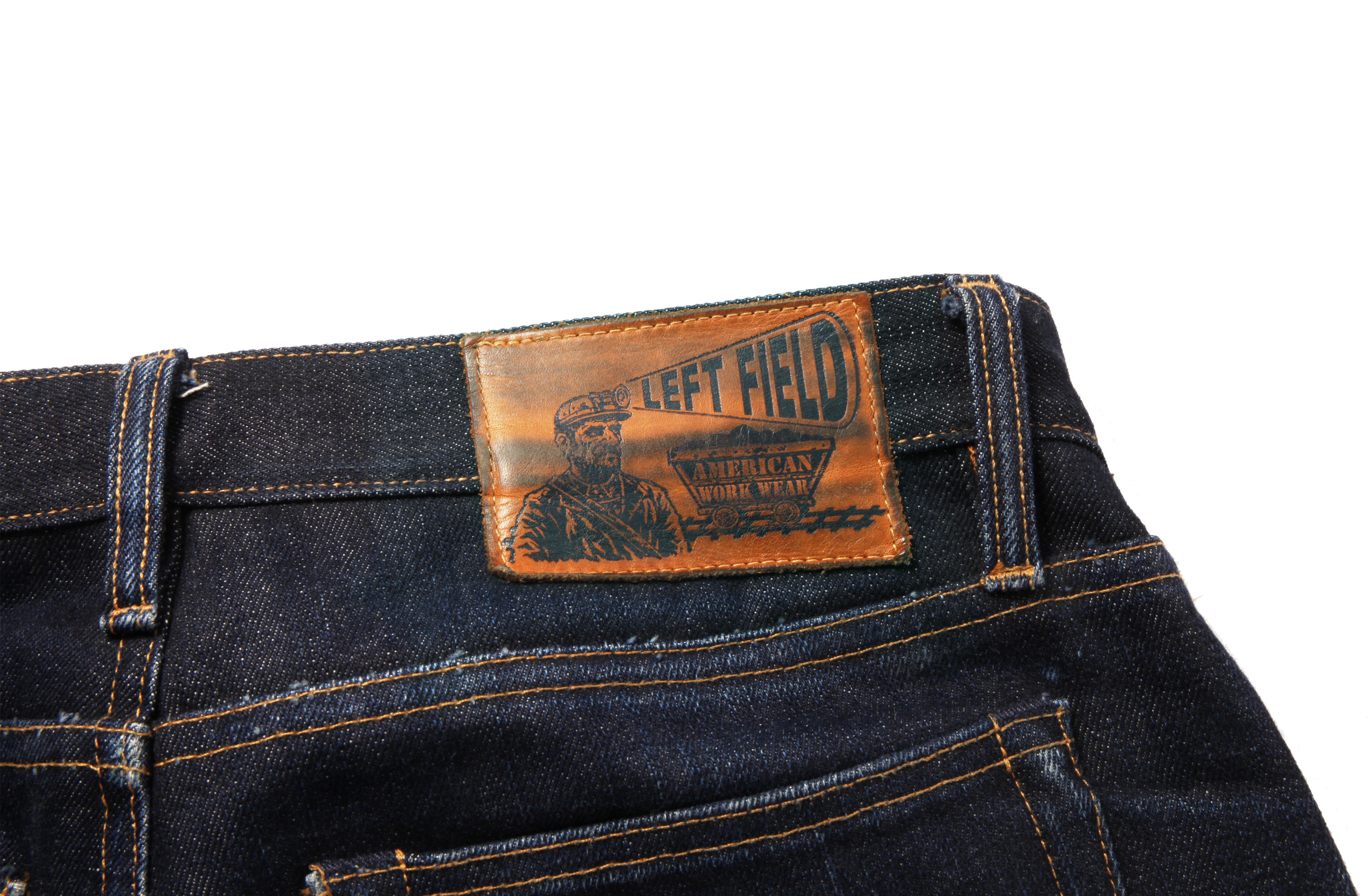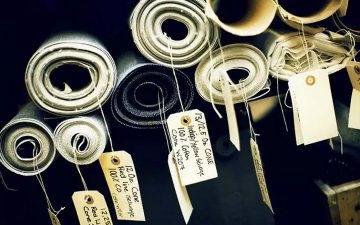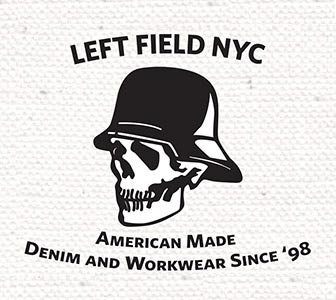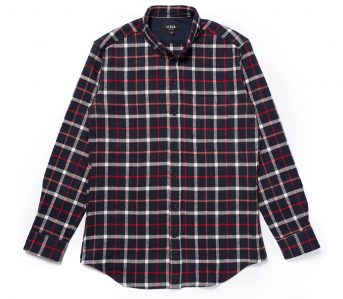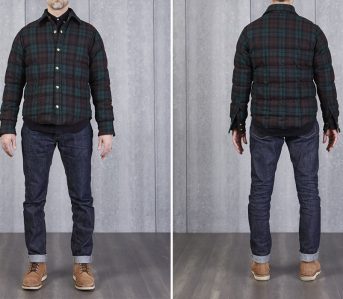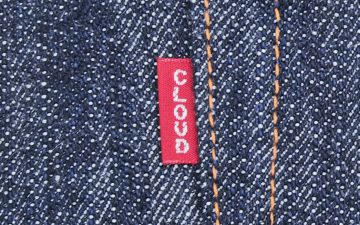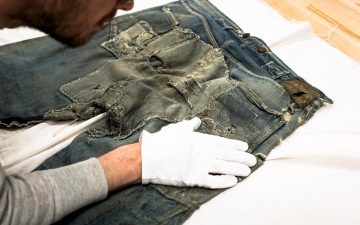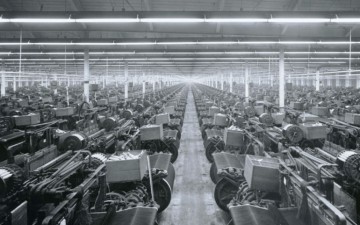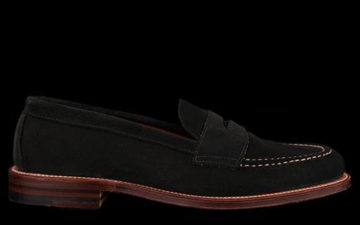Would you like to go insane? Should you have answered, “I live in America in 2017, so I’m already there,” I hear you. However, should you like to tip the scales and go even insaner, then I invite you to head over to the Federal Trade Commission website and read through the particulars of, “Complying with the Made in USA Standard.”
It’s the kind of exhausting, vague gobblygook that keeps lawyers in business…that causes you to realize that you’ve read the same sentence six times and still have no idea what it means. (Bureaucracy may be a word with French origins, but its contemporary soul is American through and through.)
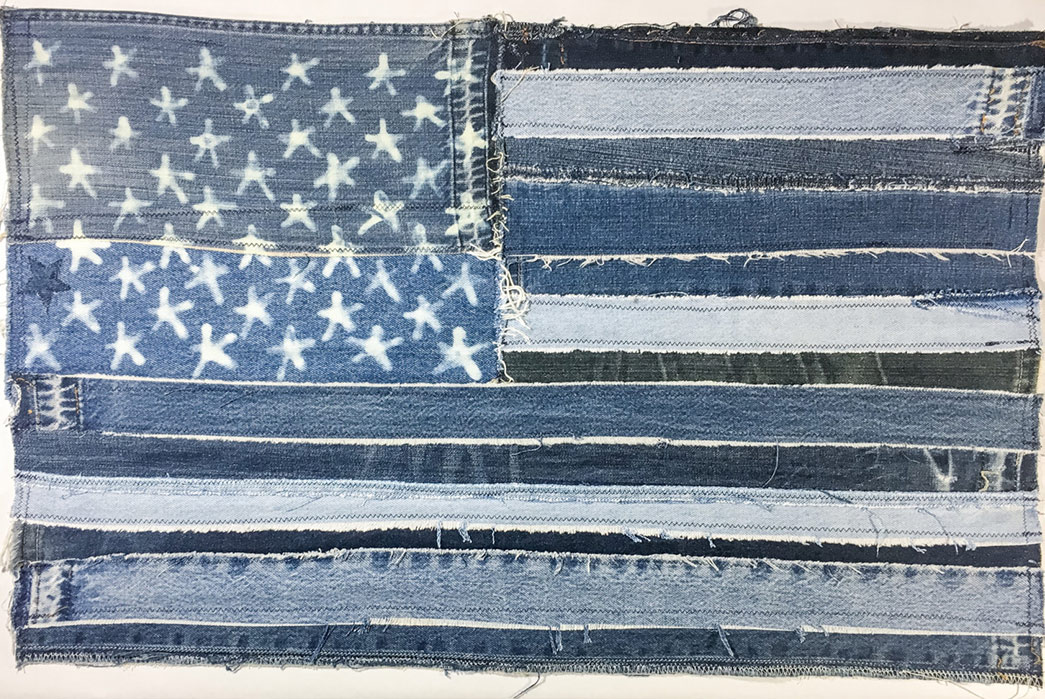
Denim American flag by Amanda Beckmann.
I bring all this up because we deal in denim here (for the most part), and other than the flag, there’s no more American a textile than what’s in a good old pair of jeans. And I for one say that doesn’t change just because the denim those jeans are made from may have been woven in a manufacturing center, oh, let’s just say a bit off the coast of America. Like China. So if a pair of jeans is made from fabric woven in China, can we still consider them “Made in USA?” Regardless of the the Federal Trade Commission says (or is trying to say), I say yes.
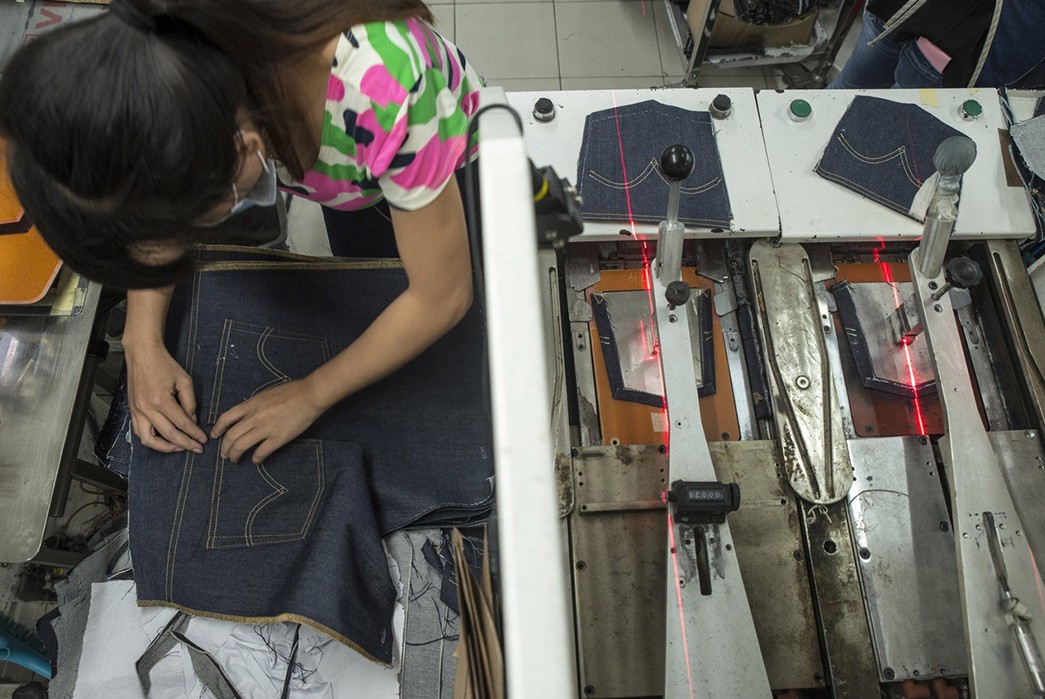
Before I go any further, let me clarify that what follows does not—to me anyway–apply to a company like Levi’s (as American an icon as you can get) who makes jeans from “denim” woven all over the world. The majority of what Levi’s (and other similar mega clothing manufacturers) makes is “fast fashion,” low-quality and (relatively) low-cost goods across the globe by workers suffering under dubious conditions, and has far more in common with discount store brands like Walmart than anything you’ll find from one of our usual suspect brands–this discussion is about integrating “foreign” made goods into the heritage, premium denim universe that we cover here at Heddels.
A full exploration of the social, political, economic, moral and ethical implications of foreign-made goods is far more complicated than a forum like this allows, and frankly I’m not the guy to write that piece, but dammit I have Google just like everybody else (except those in China–I get there will be some logical inconsistencies here) but I’ve done equal parts research and soul searching, so here we go.
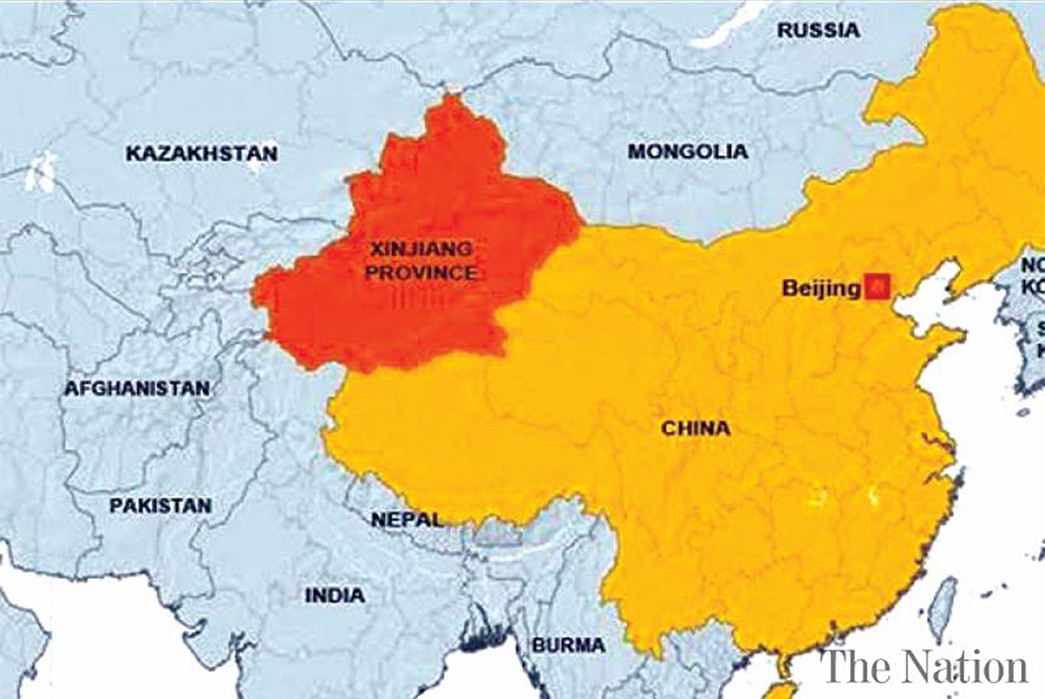
Denim is woven from cotton, so presumably wherever you can get cotton, you can get denim as well. As for the selvedge denim we revere at Heddels, it’s woven in a specific way, and when that’s done at a place like our own (now closing) Cone Mills or Japan’s Collect, everybody is happy to shell out the green for that blue. But a few years ago when similar denim started to be made in the Northwest region of China known as Xinjiang, not everyone embraced it as a good thing (“Yay–another source for cool denim!”), instead pessimistically seeing the loom as half empty (“Boo–Chinese denim ain’t ‘Merican!”).
Yes, much of China’s manufacturing sector has certainly earned its crappy reputation, but remember that every announcement from Apple about the new phone you can’t wait to buy is at the same time a celebration of another slice of Chinese manufacturing, the slice that made the machine I’m writing this on…one that has more technology in it than had the lunar module in 1969. So when some heard about Xinjiang’s long staple cotton (long fibers = awesomer fabric), they saw it as not just a small step for the rag trade, but a giant leap for their brand–Left Field NYC.
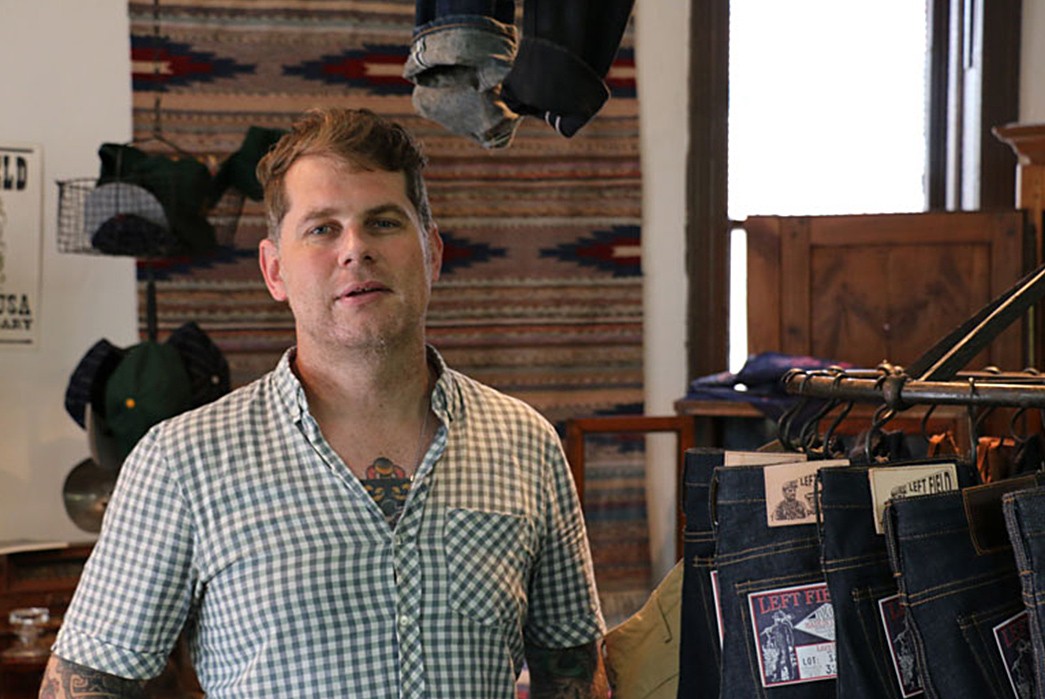
I got to talking with Christian McCann, Left Field’s founder and Chinese denim convert, about his embrace of Xinjiang, and in true Brooklyn fashion, he pulled no punches.
Heddels (John Bobey): For starters, how did you become familiar with Xinjiang cotton?
Christian McCann: I first came across it on blogs…a lot of people were talking about it because Red Cloud Collective had used it and it was extra long staple, one of the longest strands of cotton ever produced, and available at a cheap price. The extra long staple cotton provides a more durable, softer, and stronger denim and takes the dye deeper into the yarns.
H: Were you a quick convert or did it take some convincing?
CM: I was looking for a cheaper priced denim so I could offer a cheaper entry level price point at Left Field. I prefer people to buy into our lower priced tier rather than come from a cheaper priced inferior brand. The key was to find a cheaper but high quality denim, and I believe the Xinjiang is the best of both. The key selling point was the fact that it was made with an extra long staple cotton which is very rare.
H: How long have you been using it at Left Field?
CM: This is the second season we have used it, and the reception to its quality has been exceptional, as well as the diversity it offers as a unique “new” denim.
H: Usually, the thought is that Chinese-sourced products are less expensive—how did economics play into your decision to use Xinjiang cotton?
CM: Economics was a huge factor. This denim is made using antique looms, so the time it takes to weave is the same, it’s just the cost of labor is much cheaper. Also this cotton has to be hand-picked to maintain the extra long staple, and would be crazy expensive or unattainable in countries like Japan, the U.S. or Italy…countries that are generally considered more desirable for selvedge denim.
H: If it were the same price as an American maker like Cone Mills, would you still consider using it at Left Field?
CM: I would test it and let the consumer ultimately decide. Cone has had an amazing history, but it’s not very diverse with its denim selection.
H: Critics might say using Xinjiang cotton is a slippery slope, and philosophically detracts from “heritage brand” ideals—how would you respond?
CM: We still produce and have produced all of our garments in the United States for almost 20 years, way before everybody was blowing the “Made in America” horn. To be honest, it was initially the Japanese that were the ones who cared enough to pay for Made in America options. There are very few options for fabric sourced in the U.S., so we have to source from other countries.
Ultimately, if the quality is great, what makes Japanese or Italian fabric more in line with “heritage ideals” than Thailand or China? (Assuming workers are treated and compensated fairly.) These countries have been using indigo for thousands of years and have made hand crafted goods for equally as long. It depends on the factory, the machines, and the skill of the workers–not the country of origin–when discussing the decision to use imported denim.
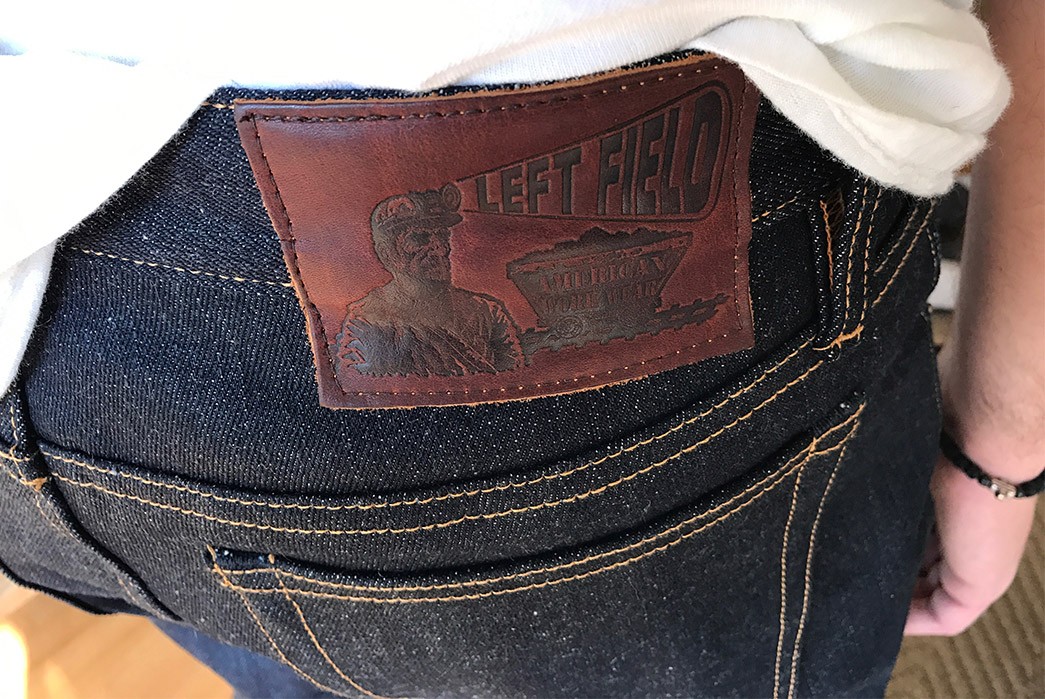
H: Was it a tough sell internally? What’s been the response from your peers and customers?
CM: It comes down to thinking outside of the box. Ultimately we try to provide the best jeans possible for our customers at the best price. We found a denim that was not only cheaper, but of the same quality of so-called “heritage denim” mills. The only reason people don’t use it is because of their prejudices towards China, or fear people will think they’re not “heritage” enough.
There are many brands out there that make goods overseas and charge way more than us, and nobody calls them out because the market believes the PR hype behind the brand. We’re simply offering the best options for our customers, and that includes fabrics from the United States, Japan, Italy and yes, China. Ultimately our customers decide what makes most sense to them, and saving $50 or more dollars buying premium Chinese denim over Japanese denim has definitely influenced purchases.
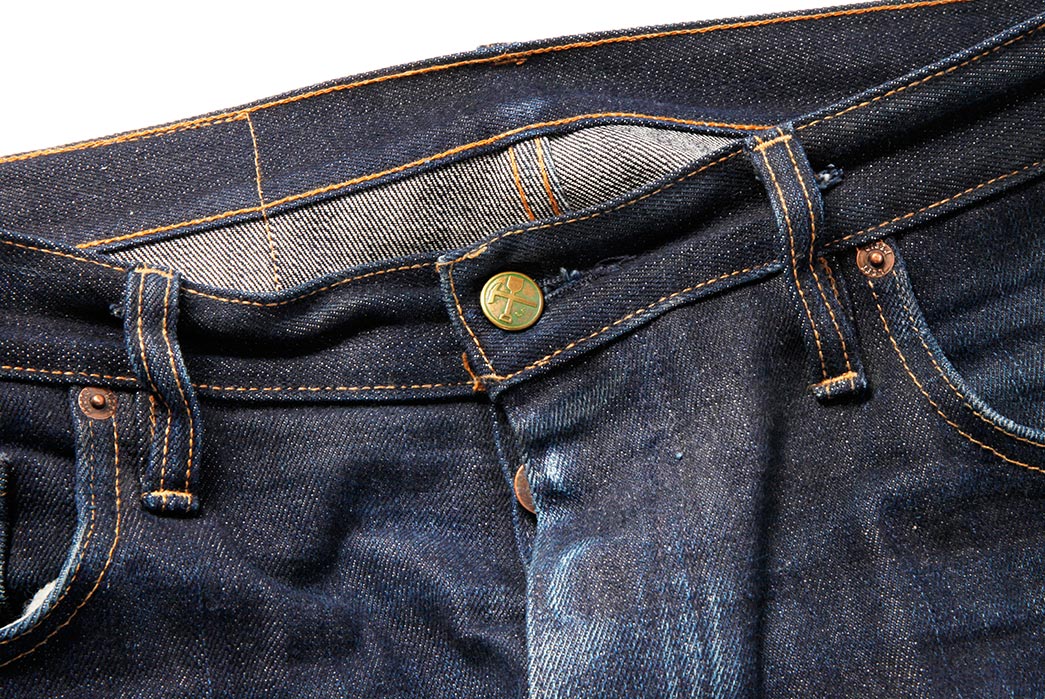
We have not had any backlash from peers or customers, and most people applaud the fact that we stuck our necks out to offer our customers cheaper prices at the risk of a negative backlash. All of our jeans are made in the same factory here in the U.S. with the same quality hardware, thread, and craftsmanship. We have added more details–tucked in belt loops, raised belt loops, using manually operated machinery to hammer down the burr nipples to give it old-world styling, as well as upgraded burrs, rivets and button–at no additional cost to the customer. Of course our costs are rising, but we have been maintaining prices much, much lower than our competitors because, in these very unsure times both politically and economically, we want people to be able to wear American made clothing at all price points.
H: The premium denim market has seen a number of producers fall away—what are the biggest challenges in surviving in the current economic climate, and remaining both competitive and innovative?
CM: There is so much competition in the denim market, and demand has slowed down as people accumulate multiple pairs of jeans…so many that they don’t have time to wear them all. We take that in consideration in the varied, unique denims we offer, as well as offering some items at cheaper price points. The cost of living is rising tremendously…rent, food, insurance, transportation…while wages remain stagnant, so price point is a huge factor for our current direction.
H: Left Field is obviously proud of crafting clothes here in the USA with homegrown components…how do you see Chinese denim fitting in with your brand identity?
CM: We carry American made denim and cotton duck, but there is a very limited market for fabrics made in the U.S. Therefore, we source fabrics that are in demand but we can’t get in the U.S. And if it’s not a U.S. made fabric, but high quality, we’ll use it. Really, do we have to think that only Japan can make high quality denim? Japan has established high standards in Chinese mills to make cheaper, high quality fabrics for their own production. Why shouldn’t we take advantage of that?
Other countries like Thailand have been making high quality denim as well, and we may look into that in the future. Progressive thinking is what separates the winners from the losers, and for Left Field that means looking beyond Japan as our only source of acceptable non-American denim.
H: What are you most excited about for Left Field’s future? Any special releases we can look forward to?
CM: We are always looking to do things a little different from the rest of the market, as stated in the name Left Field, i.e. out of Left Field. We are doing some 80s style 3 stripe tube socks, the kind I loved to wear as a kid, but we added our skull logo on the middle stripe and made them super thick with a heavy terry cushion throughout so that they can be worn for comfort or performance for Skaters. We also have a garage jacket about to go into cutting I’m really stoked about!
How can you not love a guy who can get as excited about global economics as he does about tube socks? Is Left Field’s embrace of Xinjiang denim evidence of a compromise? Yes, of course it is, but that word compromise need not have negative connotations. Christian’s company isn’t just a small business, it’s a micro business by all reasonable standards, and there’s only so much market share it can ever hope to serve.
Left Field could easily put themselves right out of business by adhering to an absolutist, literal interpretation of Made in the U.S.A., but instead it has chosen to not even thrive but simply survive by sharing my belief that what’s most importantly “Made in the U.S.A.” is the idea of high quality, exceptional design, and fair treatment of those who ultimately make the thing.
Christian and I both have deep roots in Pennsylvania’s coal country, and understand that it was organized labor that saved many lives by improving the working conditions and wages of those who were hauling tons of black coal that had been “made” in the U.S.A. Increasingly, it’s more about the process than the product that signifies a product made to the highest American ideals. (Buzz Rickson’s makes painstakingly exacting replicas of historic American workwear and military garments–they’re made in Japan, but to me are more deserving of a “Made in U.S.A.” designation than much of the homegrown clothing that squeaks by on a technicality–ftc.gov, I’m looking at you.)
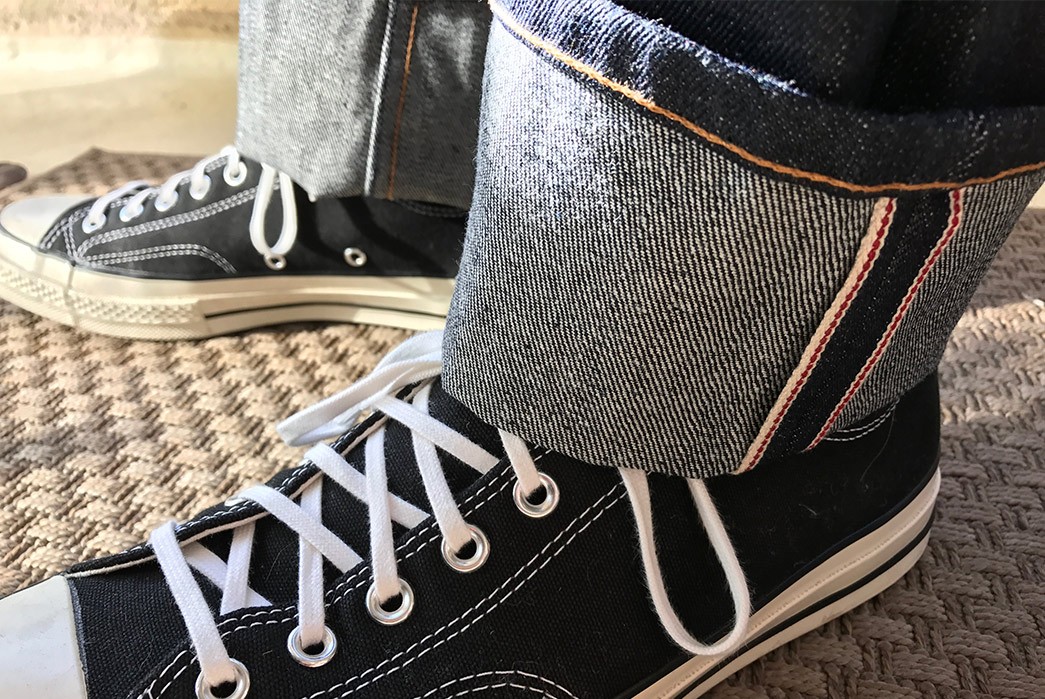
I’ve been wearing a par of Left Field’s Xinjiang Greasers, though, much like Christian alluded to, not nearly enough to have them yet show any real fades. But in my expert opinion, the denim is on par with any I’ve ever encountered (made from North Carolina to Southeast Asia), and as Christian foretold, they have a certain special something that’s specific to them, and after all, isn’t a little idiosyncratic character what we’re all looking for from the clothes we buy?
Otherwise, we’d all just shop at the mall (I’m speaking figuratively here as I love malls, especially because Auntie Anne’s Pretzels make me happier than most other things). And the fit is Left Field’s classic Greaser, a comfy, but covering mid-rise with a full but tapered leg–as American a cut as they come.
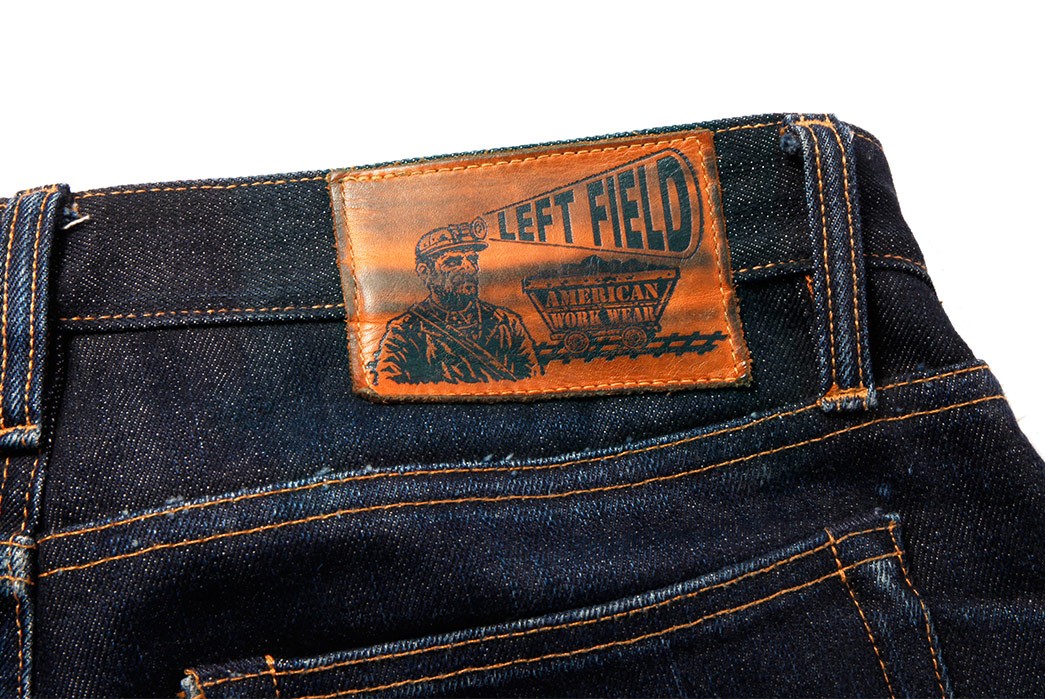
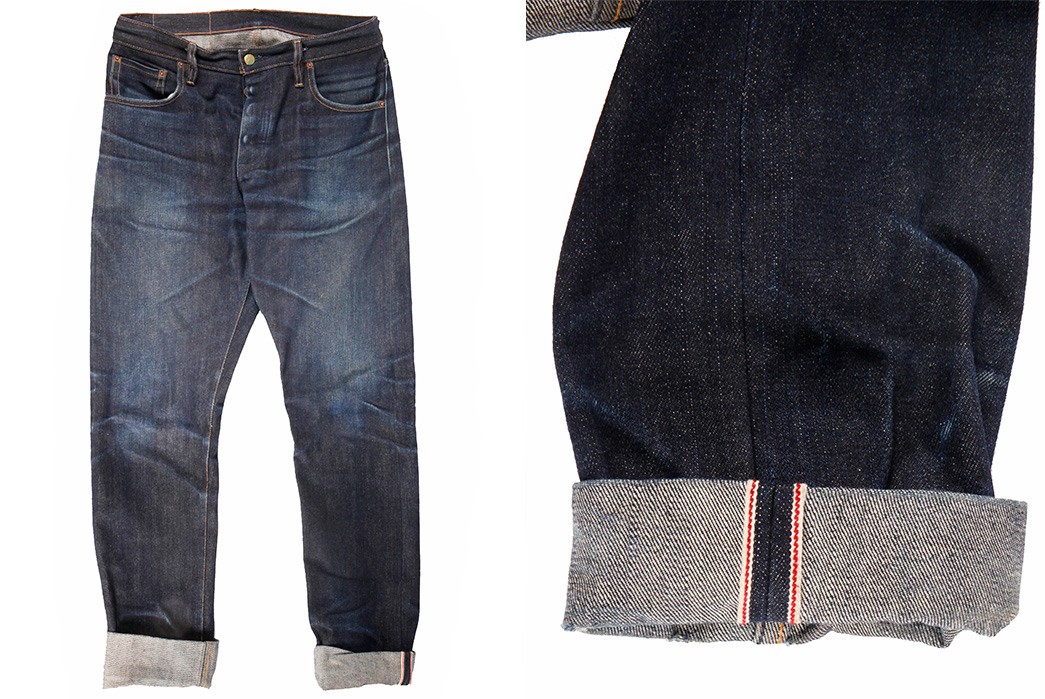
But take a look at the pair Christian has been breaking in, and tell me they’re not something amazing, well on their way to getting even moreso.
There’s no denying that there is a strong isolationist sentiment in the air these days, especially the air in Washington D.C. (or whatever state the particular golf course happens to be in that weekend), but there’s also no denying that the world is a smaller place than it used to be, and the global approach to manufacturing much bigger.
American ingenuity has always prospered by utilizing whatever advantage may exist wherever it may exist. Plus, with the announcement that Cone Mills, our last domestic selvedge denim maker, will be closing, would you prefer no selvedge denim over foreign selvedge denim? That’s absurd and, thankfully, unnecessary, thanks to pioneers like Left Field.
Is a Ford F-150 pickup truck less an American vehicle because parts of it were made or assembled in Canada? Or Mexico? Is Masahiro Tanaka less a New York Yankee because he wasn’t “made” in America, but instead Itami, Japan? Are Left Field Greasers less deserving of a claiming to be proudly American made because they are done so with Xinjiang denim? I believe the answer to all three is a resounding, all American No Way, Jose. I’m thrilled that we can export American made products, but I’d be even more thrilled if we could export the sensibility, ethic and pride that lies at the heart and in the soul of the four words, Made in the U.S.A. We’d all be better off for it.

